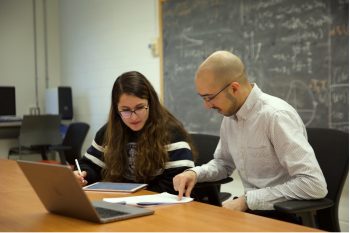The groundbreaking photovoltaic research being conducted by U of T Engineers was recently featured in a series on Canada’s future in solar energy that appeared in the Postmedia Network, which publishes The National Post and other daily newspapers across Canada.
Professor Ted Sargent’s (ECE) development of quantum dot solar cell technology was highlighted as an innovative sustainable energy solution. Quantum dots are nanoscale semiconductors that capture light and convert it into electrical energy. Because of their small scale, the dots can be sprayed onto flexible surfaces, including plastics. This enables the production of solar cells that are less expensive than the existing silicon-based version.
In a recent paper published in Nature Materials, Professor Sargent’s lab reported 6% power conversion efficiency. Professor Sargent explains to Postmedia’s Margaret Munro that just five years earlier, the conversion efficiency was zero. As the technology reaches 10% efficiency, Professor Sargent said the opportunities for commercialization become viable. Already he has an agreement in place with the King Abdullah University of Science and Technology in Saudi Arabia for rights to Professor Sargent’s quantum dot solar cell technology. The license covers 38 countries in the Middle East, Western Asia, Russia and India. U of T and Professor Sargent continue to hold rights to the rest of the world.
Also profiled was PhD Candidate Graham Morse (ChemE) who is working with Professor Tim Bender (ChemE) on the development of organic solar cells. Morse created a new organic chemical compound called pentafluorophenoxy-boronsubphthalocyanine, which is a promising new material that can be used to harvest the sun’s power.
Morse is featured in “Solar technology scientists lured to leave Canada .”



